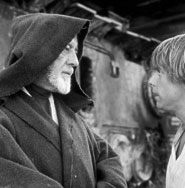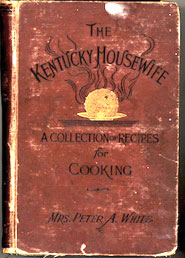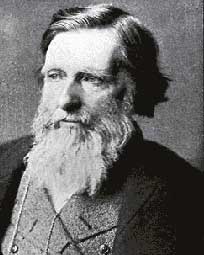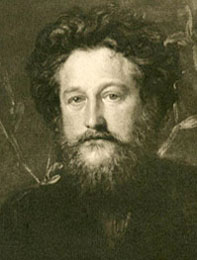| How the Industrial Revolution Spawned the Arts & Crafts Movement | |||
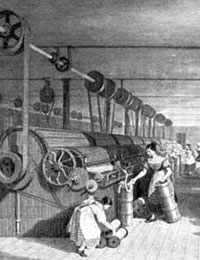 |
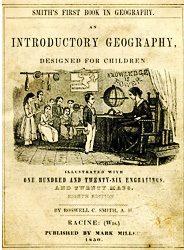 |
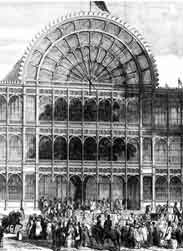 |
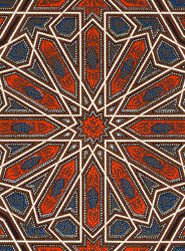 See the full edition here |
The Industrial Revolution James Watt's improvements to the steam engine, and its subsequent application to manufacturing in the late 18th and early 19th century, resulted in a major societal shift. Traditionally manual laborers learned their trade by progressing through stages of apprenticeship under a master craftsman.
The new steam engine driven machines replaced the craftsmen system with faster and cheaper production but often greatly inferior results. The critical eye and artistry of the craftsman was sacrificed for speed. The worker now served the machine, feeding it raw materials and allowing it to determine the final product.
|
Negative Impact on Design Paper makers began producing paper from wood pulp — creating an acidic paper prone to yellowing and foxing. Book binding was mechanized and cheapened. The loss of the professional book craftsmen had a detrimental effect on print and type design.
|
The Crystal Palace Exhibition Awash with pride and profits from the Industrial Revolution the English upper class, spearheaded by Prince Albert (then husband of Queen Victoria) organized a showcase for modern industrial technology and design. In 1851 the Great Exhibition of the Works of Industry of All Nations was hosted in London. The centerpiece for the exhibition was a glass-enclosed steel beam supported structure, not unlike a huge greenhouse.
|
The Grammar of Ornament 1856. In response to the failings at the Crystal Palace a call for better understanding of design and ornamentation was answered by Owen Jones who published an exhaustive inventory of international and historical decorative styles. Printed in colorful lithographs, the book includes 20 sections of illustrated motifs and Jones's 37 Propositions on what makes good design. Two examples: Proposition 5 Construction should be decorated. Decoration should never be purposely constructed. That which is beautiful is true; that which is true must be beautiful. Jones's book...“pioneered new standards in chromolithography. Jones used his printing press to enter the lucrative market for illustrated and illuminated gift books ... He developed innovative new binding techniques ..., papier máché and terracotta ...much of which could trace its aesthetic lineage back to sumptuous medieval illuminated manuscripts and religious bindings.” Read more |
| Arts & Crafts Movement is Born | |||
|
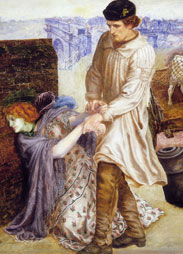 |
|
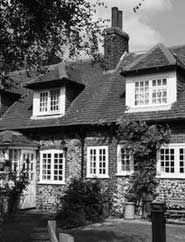 |
| John Ruskin (1819–1900) Born to wealth, John Ruskin was an author, poet and art critic whose socialist convictions caused him to reject his fortune to fulfill his ideologies. Ruskin's theorized that the Industrial Revolution's division of labor induced monotony and was the main cause of the unhappiness of the poor. He looked backward to an idealized medieval period as a paradigm of the union of art and labor in service to society. He romanticized “The organic relationship ...between the worker and his guild, the worker and his community, between the worker and his natural environment, and between the worker and his God” Ruskin's writings influenced many important social advocates including Mahatma Gandhi. His anti-capitalist essay, Unto This Last, 1862, criticized the destructive effects of industrialization on the natural world, a foreshadowing of today's Green Movement. Ruskin's critical art reviews could make or break the careers of contemporary painters. This explains why Ruskin's critical review of James Whistler's paintings engendered a law suit. (See Reinterpretation of the Manuscript) |
The Pre-Raphaelites Toward the middle of the 19th century, a small group of young painters formed a secret society in reaction against what they felt was the frivolous art of the day. They rejected the 'decadence' of the established Royal Academy and deeply admired the simplicities of the early 15th century. They wanted to bring English art back to a greater truth to nature, something they felt had been lost in the grand manner of Raphael. John Ruskin's initial support of the Pre-Raphaelites gave the group the credibility they needed to be accepted as serious artists. Ruskin admired the group's commitment to nature and the belief that art should communicate truth. (Things went south however after Ruskin's wife left him for one of the Pre-Raphaelites). ... Brotherhood members were very concerned with the world in which they lived and the social problems brought about by the Industrial Revolution. In some cases, they painted scenes of modern life with a moral message, as in Rossetti's Found. This painting shows a young country woman turning in desperation to a life of prostitution, being unable to find suitable work in the burgeoning London metropolis.1 |
William Morris “Although the official Brotherhood lasted only a few years, their work and objectives influenced a second wave of English painters and artisans, including Edward Burne-Jones and William Morris, who came down to London from Oxford University to begin their careers in 1856. They met Dante Gabriel Rossetti, whom they greatly admired, and even moved into his old rooms. Morris and Rossetti set about designing a suite of furniture based on medieval models. These furnishings were an early foray into decorative arts. Within a few years, Morris founded Morris, Marshall, Faulkner, a firm devoted to producing artist-designed, hand-crafted household objects.” Morris and his Pre-Raphaelite associates deeply believed that beautiful objects would improve individual lives adversely affected by the harsh industrial world.” For more information on the Pre-Raphaelites see the site for the Delaware Art Museum.1 |
The Arts & Crafts Movement
The Arts and Crafts Movement was an international design movement that reacted against mass production, both the low quality of design and the demeaning conditions under which products were produced. The movement began in England in the late 1800s, and spread to the United States in the early decades of the 20th century. While the Arts and Crafts is not considered a true architectural movement, the Arts and Crafts cottage was a forerunner of a machine for living. The houses, designed to emulate medieval thatched huts, were cozy bungalows made from natural materials, (wood, stone and stucco). Doors were covered with wide eaves, porches with thick columns, chimneys, open floor plans, stained glass, and dark wood moldings.
|
| Footnotes | |||
| 1 Quote and Image Source Delaware Art Museum site |
|||
| Copyrights | |||
| ©Designhistory.org 2011 | For Permission Info click here | ||

